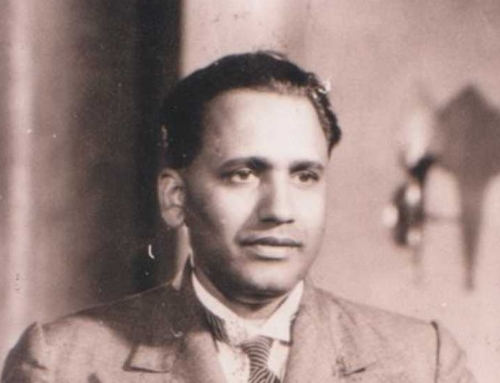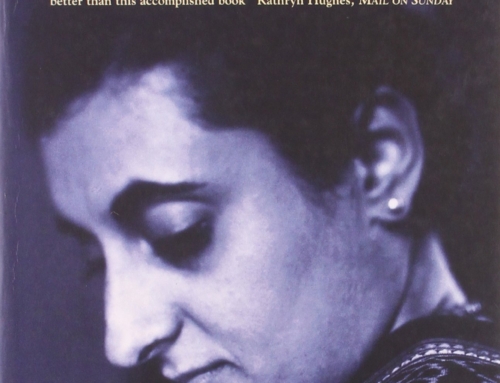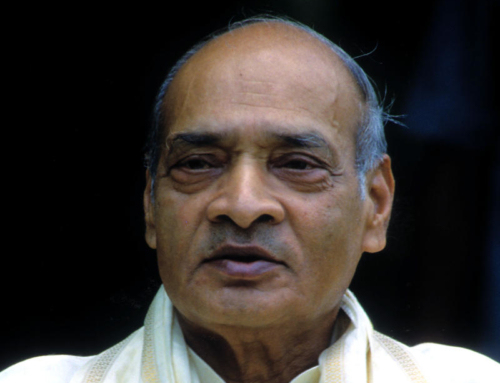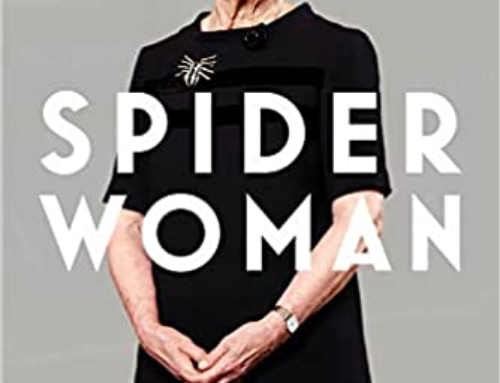The Sabarimala judgment was historic. The Supreme Court decided, by a majority of four to one, that the exclusion of women of menstrual age (10 to 50) from the shrine of Lord Ayyappa at Sabarimala in Kerala was opposed to the fundamental rights of women. Ironically, the lone dissenter, Justice Indu Malhotra, was the only woman on the Bench. The judgment is best viewed through the lens of two Articles of the Constitution, which deal with the subject of religious freedom: Article 25 and Article 26. Article 25 grants the freedom to practice religion. It is expressly subject to the other fundamental rights in the Constitution. Article 26 grants religious denominations the right to ‘manage their own affairs’ in matters of religion. It is not, as per its text, subject to the other fundamental rights. The majority, in short, held that the Article 25 rights of the excluding men had to give way to the Article 25 rights of the excluded women, and these rights were anyway subject to the other fundamental rights in the Constitution. As to Article 26, it held that the followers of Lord Ayyappa did not constitute a religious denomination, and so Article 26 did not apply.
I have been averse to leading this blog astray from its usual grasslands, happily grazing among the insolvents and bankrupts. However, the prospect of interviewing Navroz Seervai on the red-hot Sabarimala issue, that too in the immediate aftermath of his having argued perhaps the Bombay High Court’s most significant constitutional law case this year, coincidentally also on religious freedoms under the Constitution, was much too tantalising. Working with Seervai is good for any junior lawyer’s confidence – he is always fully prepared, knows all the judgments beforehand, and is intent on listening to even the most inexperienced voice in the room. I’ve been to Seervai’s chambers several times before, but when I sat down in the chair opposite him, the idea of discussing constitutional law with him made me distinctly edgy. A large photograph of a young HM Seervai (father of Navroz and surely our greatest jurist) was staring straight at me. Once the recorder was switched on though, I think I managed to block these thoughts. Seervai was ready as usual, and had a rigorously marked copy of the judgment before him. Our conversation covered not just the correctness of the ruling, but niceties of the individual judgments (there are four), and Seervai’s views on sexism in the legal profession. Click play for the audio of the full interview:
TRANSCRIPT
ADITYA BAPAT: The recent decision of the Supreme Court in the Sabarimala case was controversial as soon as it was laid down. We’ve seen protests not just at the shrine but also at different parts of Kerala and we’ve also seen deep divisions amongst legal commentators and journalists alike in the print media. What a lot of people don’t know is that just as the Supreme Court was laying down its decision in that case, the Bombay High Court was hearing a petition by persons of Zoroastrian faith on the right to religious freedom under the Constitution. It was a petition filed by certain persons of Zoroastrian faith who objected to the Metro passing under their fire temple on the ground that the connection between the sacred fire and the core of the earth was broken by the passing of the Metro. The counsel who argued that case on behalf of the Zoroastrian petitioners was Navroz Seervai, and we’re fortunate today because we have him with us to discuss the Sabarimala judgment and religious freedom under the Indian Constitution generally. Navroz, thanks a lot for being here with us.
NAVROZ SEERVAI: You’re welcome.
AB: There was a deep division in the Supreme Court as well over this particular issue. Different judges decided differently, and there was even one dissent. My first question is, do you think the majority was correct, or do you agree with the dissent? Do you think the Supreme Court decided the case correctly?
NS: I think broadly speaking the majority judgement is correct, though the minority, if I may say so, is highly persuasive, but [after] giving it a lot of thought, at the end of the day, I feel that it is the majority judgement that is correct, and is in this vexed subject the correct way forward.
AB: In the dissent, Justice Malhotra seemed to think that the petitioners before her, who in this case were the Indian Young Lawyers’ Association, failed to show that they had adequate locus standi because they themselves did not claim to be devotees. Her viewpoint seemed to be that “If you aren’t even a devotee of this particular idol, then what right do you have to approach the Supreme Court in a petition?” Do you think that the petition was rightly entertained?
NS: Aditya, again this is a difficult question and there are no easy answers. At first blush especially, what Justice Malhotra says sounds reasonable, sounds logical, and therefore attractive. But having given it a lot of thought, having read the judgement not once but several times, at the end of the day again I do feel that the scales tilt in favour of the majority judges who entertained the petition and rejected the argument of standing and local standi.
AB: At the soul of this judgement are two very different ways of looking at the Constitution, I feel. Firstly, the majority seems to look at the issue from the perspective that the Constitution protects and subserves a just and equitable order, has a social revolutionary intent, it is disruptive and transformative in its nature, and if something comes in the way of that just order, then that bar has to be removed. On the other hand, the dissent looks at it differently. Justice Malhotra seems to think that the Constitution protects religious pluralism, and if we’re going to look at religious rights from the microscope of rationality, then those rights may cease to exist. I’m not asking you about the correctness of the judgement, because you already answered that, but do you think these two ways of looking at the Constitution are irreconcilable, and if so, which view do you agree with?
NS: Let me start by saying that I myself argued that if there is one area where logic, reason and rationality have virtually no part to play, it is in the field of religion. It’s almost axiomatic that religion is founded on faith and belief. It may be irrational. In fact, some of the earlier judgements go to the extent of saying that outsiders may think that it is absurd or ridiculous; they may think that it is superstition and not genuinely religious belief or faith, but not for nothing did Justice Mukherjea in the first two seminal cases in 1954 propound the doctrine that fundamentally in the first place the court will be guided with the views of the persons who adhere to and believe in that religion, who are the followers of that religion. If one looks at it from that perspective, despite what I just said about the correctness of the judgement, one would be inclined to accept Justice Malhotra’s viewpoint that not only does the Constitution protect religious pluralism, it gives a very high status to these fundamental rights under [Articles] 25 to 28, in particular 25 and 26 and that really to try and examine these practices, beliefs and tenets, be it under 25 or 26 from the point of view of reason, logic, rationality…is antithetical to what the framers of the Constitution actually intended.
On the other hand, I don’t think [they’re] irreconcilable, the majority view and the minority view, because the majority has whilst repeating and reiterating the importance of these fundamental rights in India, (especially in India)…they have rather carefully, and I must say, for once realising the gravity of the matter, not sweepingly and broadly, but with a certain degree of specificity, carved out the area where they feel that other rights under Part III [fundamental rights] would prevail or trump the right under 25 or 26, and they seem to draw the line where the assertion of the right under 25 and 26 would blatantly violate other important, very important fundamental rights under [Articles] 14 (right to equality), 19 (freedoms such as freedom of speech and freedom of occupation) and 21 (right to life and personal liberty) qua the followers of that very religion.
So, for example, all three majority judgements say that given that 25 is an individual right and not a denominational right, each individual has a right and you are denying both the religious right under 25 itself, not to mention violating 14 and 21, to Hindu women, and that surely could not be the intent and purpose of 25 and the framers of the Constitution. So I would say that if future courts, future benches, adhere to this line, sort of a laxman rekha, which of course in each case may not be as simple, in fact not simple at all to gauge, that’s a task the court would have to do, but if they could, then I think you could have a synthesis, on the one hand rejecting a possible extreme stand which the minority takes that we just won’t interfere with it, and the stand of the majority that by and large we accept the earlier judgements, the later judgements, the importance of this fundamental right, but we won’t allow it to damage or affect the general social fabric which is to be found in 14, 19 and 21. So that I think would be my answer.
[Note: Even before the Sabarimala judgement had been delivered, Seervai, whilst arguing the “Zoroastrian Fire Temple-Metro” matter, had emphasised to the Bench that none of the beliefs, tenets, rituals and practices of the Zoroastrian community which were fundamental and essential to the Zoroastrian religion, and in respect of which the petitioners claimed the protection of Article 25, were deleterious or violated Articles 14, 19, 21 of the Constitution. Subsequently, after the Sabarimala judgment was passed, the High Court held a sitting specifically for all the Counsel to address it on that judgment. In his arguments, Seervai drew on the majority judgements in the Sabarimala case.]
AB: And just to add to that, of cause, the right under Article 25 is expressly made subject to…
NS: …yes. to the other fundamental rights in Part III.
AB: About this requirement of showing the Court that the practice you are seeking protection of is an “essential religious practice” – this is judge-made law. You won’t find the words “essential religious practice” in the Constitution. Justice Chandrachud, especially, in his judgement says this “essential religious practices” test makes judges into theologians, it makes them go through scriptures and religious tenets to find out if a religious practice is “essential” and in fact we need to replace this with a test which accepts at face value that what the religious group is saying is an essential religious practice and then see how the chips fall and decide if it is a right protected under Articles 25 and 26. What do you think?
NS: I think Justice Chandrachud is correct. In fact, if I may say so, that part of his judgement is one of the most intellectually rigorous, and one of the most jurisprudential parts of his judgement. He has highlighted the fundamental contradiction at the heart of the Constitution itself, even as he has in other parts of his judgement asserted that 25 will have to be subservient to and give way in certain circumstances to 14, 19 and 21. How the theory evolved would be an essay or a book in itself and we won’t get into that. In fact, he goes to the extent of saying that “…we sit as a Constitutional Court and not an ecclesiastical Court and we are neither equipped in terms of expertise nor were meant by the framers, to wade into these theological and ecclesiastical questions”. I think his entire judgement, but certainly that part, which is Part M, bears very, very close scrutiny and consideration, and yes, I think he’s certainly raised a legal and constitutional issue that requires very close and careful consideration. Of course, the hundred million dollar question is that what would replace it? I am not sure, Aditya, that he has gone to the extent of saying that we should just leave it to the followers of that religion. He sort of at the end of that Part says that it needs to be relooked at. What would replace it is not something that he has, in so many words, enunciated. He has said that it would have to be considered in a future case.
AB: Sticking to the judgement of Justice Chandrachud, he does something that according to me is quite bold. Article 17 of the Constitution, which deals with the abolition of untouchability, has, in the last few years, as these restrictions are less and less prevalent in our society, been more or less dormant. He has revitalised the Article in this case by saying that the exclusion of women of menstrual age, which was the usage in the Sabarimala temple, offends that particular Article which deals with the abolition of untouchability. The dissent counters this by saying no, Article 17 was only to deal with caste-based exclusion. I’m going to put you on the spot – what viewpoint do you agree with?
NS: I must say that this one is an easier question to answer than some of the others. This is one area where I think, with utmost respect to Justice Chandrachud, I think he has gone completely wrong. I thought that on my first reading, I thought that on my second reading, and I thought that on my third reading. I think that on this issue Justice Malhotra is absolutely correct. She uses very cogent reasoning. She quotes very cogent sources, and all kudos to her, given that she had just gone on to the Bench, and in a minority judgement, she uses quite strong language in differing from Justice Chandrachud’s viewpoint. I agree with her, I think Justice Chandrachud on this is wrong. But [though] I don’t change my view, I noticed that on one of my three readings, Justice Nariman in a footnote in his judgement makes reference to the minority judgement of Chief Justice BP Sinha in the Syedna case, and draws attention of people, lawyers and laypeople alike, to the fact that in his minority judgement Justice Sinha considered excommunication as a form of untouchability. Obviously, the majority (Dasgupta, J.) and the concurring judgement (Rajagopala Ayyangar, J.) rejected that. Interestingly, Justice Nariman himself does not adhere to that view or deal with it. It is only Justice Chandrachud and Justice Malhotra who deal with it. I think that adequately answers it. Even despite having noted this minority view by Chief Justice BP Sinha commented on by Justice Nariman, I think my answer has to be very firmly in favour of the view of Justice Malhotra and against that propounded by Justice Chandrachud.
AB: Both of us have read this judgement, but that’s because we’re lawyers. It’s 411 pages long. It is harder and harder now to read the long judgements that spew forth from the Hon’ble Supreme Court. In this case itself, four Honourable Judges issued judgements, all formidable, long judgements. If you had to recommend one of these judgments to students or to laymen…
NS: I’m not able to answer that question in a simple way of A or B or C, and it’s not that I’m ducking the question. I would answer it this way – and you’ll have to take it as it is – I would say that [to] the student who was interested in knowing the law on 25 and 26 and not necessarily wanting to get into larger, more jurisprudential, I would even say more philosophic issues, I would unhesitatingly recommend Justice Nariman’s judgement. Because it’s an amazing – all his judgments are amazing – review…the word recap would be doing injustice…a review, in-depth review of the entire case law. In fact, it is not a coincidence, (you see this in many of his judgements,) that whilst many other concurring judges refer to the standard ones, you find in Justice Nariman’s judgements a reference to at least 5 or 10 judgements that even the other judges haven’t referred to. If nothing else, then for that reason, I would recommend Justice Nariman’s judgement.
If on the other hand you have a law student or a layperson who wants to look at it not just in the legal context but a much broader, wider discussion, a philosophic and jurisprudential discussion, and of course the law on 25 and 26, I would be inclined, of course then, to recommend Justice Chandrachud’s judgement.
AB: You’ve already indicated that you agree with the majority judgement, but if the persons who disagree with this judgement, and want to see it set aside were to come to you for legal advice on how it could be reversed – as a lawyer you have to give them advice, it’s your duty – how would you advise them?
NS: Difficult, it would be difficult. One obvious piece of advice that one could give as a lawyer is for them to try and persuade Parliament in its constituent capacity and character to amend the Constitution to make it very clear that the courts can’t go into this. In short, in some way or the other, to say in statutory or constitutional language what Justice Malhotra has said.
The other could be to persuade the legislature in Kerala to amend the [Kerala Hindu Places of Public Worship] Act and to declare that it is a denomination, the followers of Lord Ayyappa do constitute a denomination. That would take you out of 25 and having to stand the test of the other fundamental rights; it would take you into 26, then it’s always easier to accept a denominational practice than it is if you’re dealing not with a denomination within a religion but the religion as a whole, because the chances of there then being conflicts are much more. That could be the second.
AB: We’ve delved quite deeply into the law on this subject and thanks in no small part to your great insight on the issue. Let me ask you a more general question – the passing of this judgement was in a sense a perfect storm because it also coincided with this upsurge in the form of the #MeToo movement in the print and social media where women were objecting to, rightly objecting to, their horrific treatment at the workplace. Justice Indu Malhotra recently in a speech said that there is rampant sexism in the profession and we see it from the underrepresentation of women both in the judiciary and in the profession generally. How do you think that this problem of sexism in the profession can be tackled?
NS: Not easy. Not easy at all. One would be dealing with tradition and practice which one would say almost has reached the level of gestalt; the gestalt of individuals. And of course, when I say individuals, I mean men. But, because it isn’t easy, that doesn’t mean one doesn’t do it or doesn’t propound a change. So, whilst we know where we are starting from, I think [there are] two fundamental points I’d like to make. One is that at the end of the day it needs a fundamental change in the attitude and perception, both intellectual and emotional, which I think is very important, but not to be misunderstood, of men towards how they perceive women in the workplace. And according to me if that doesn’t change, you’re not going to be able to change anything.
The other is, those who have it in their power and I would say that in that situation it would mean certainly judges, across the bar from the Supreme Court down to your district courts, magistrate’s courts, tribunals, etc., not just the Supreme Court and high courts, realising this and being much more sensitive to it and proactive. And that also could percolate to…I’m now restricting it to the system I know, of seniors, large solicitor firms. In the case of seniors, (by) actively taking young ladies into their chambers as juniors, for example. In the case of solicitor firms or advocate’s firms, the partners, people who own the firms, making women partners. Again, encouraging and taking young ladies in as associates and in their case ensuring that there is no harassment in the workplace. So, I think it’s a combination of all. So, if the judges do it, if the counsel who take on juniors are aware of it and encourage young ladies by taking them on in their chambers, if the law firms do it, you may see some change. That’s how I see it.
AB: Navroz, thanks a lot for this illuminating and riveting discussion.
NS: Welcome.



